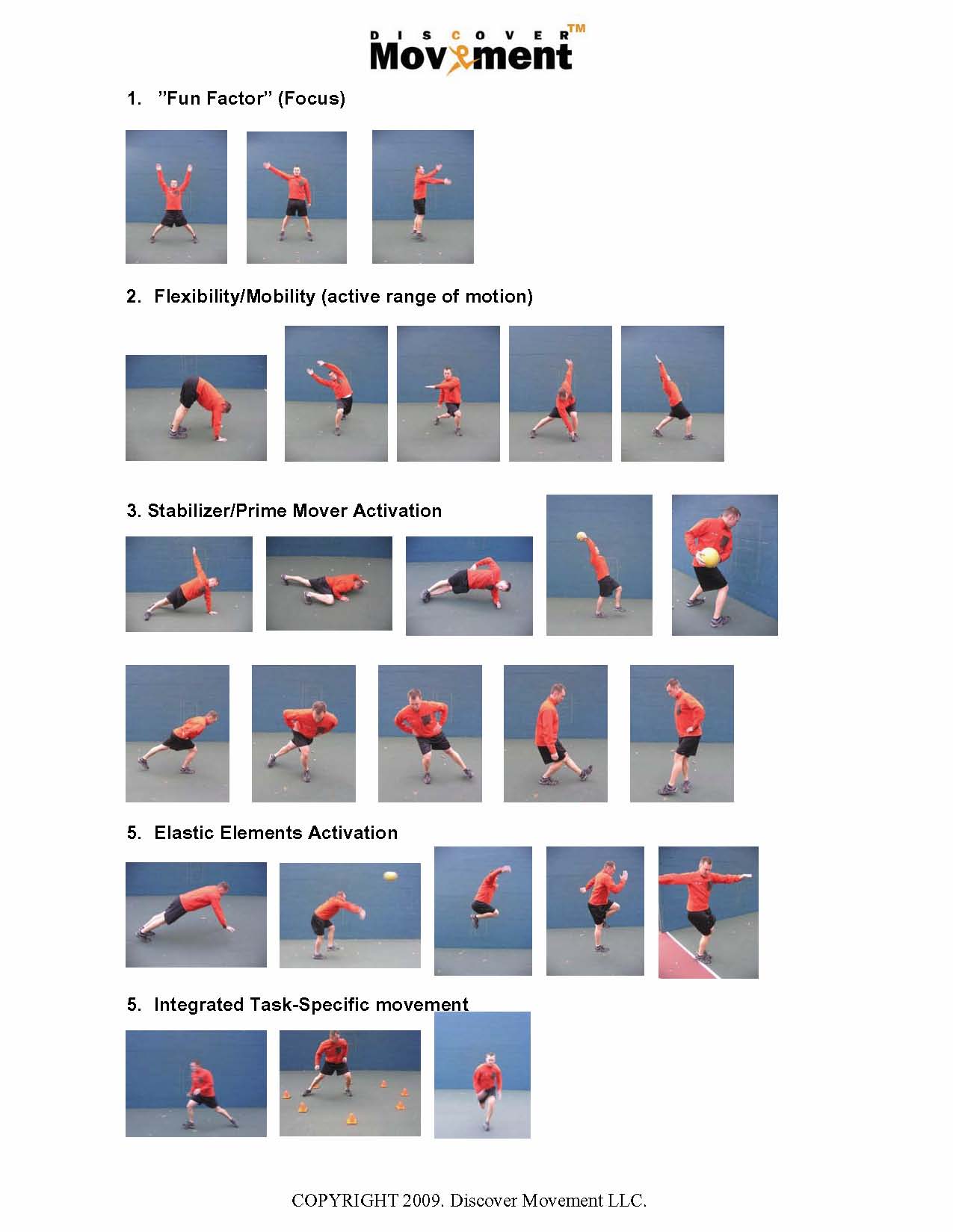1. Activate, don't pacify! - Avoid sleepy and boring warm ups -
"So, jog around the field two times and sit down for 10 minutes and do static stretches." No way!
We would have just spent a total of 15-20 minutes of valuable practice time doing stuff that does not optimally activate the body or the mind for the practice or the game. If you have been doing "slogging" (slow jogging) and the same seated hamstring stretches as a warm-up for the past 8 years, it might be time for a change and I will tell you why. The "passive warm-up" radically underestimates what our bodies and our minds need for optimal warm-up and activation.
After the warm-up the athletes should have elevated their level of physical preparedness as well as mental level of focus. According to studies some warm-ups increase the performance by up to 20% and some decrease the performance by up to 17%. What kind of a warm-up would you like for your team?
2. Sequence it! - Use a pre-movement check list to turn on all the systems -
"Wing condition: check. Fuel quantity: check. Flight controls: check. Runway ready: check."
When the pilot getting ready for take-off, he checks all the systems of the plane and turns each one of them on while going through a step by step check list. We can use this concept for movement preparation as well. But what does the check list for a dynamic warm-up look like?
Well, here is one example.
A) Flexibility and mobility of each of the six anatomical stations: check.
B) Stability and proprioception by activating the nervous system: check.
C) Fundamental movement pattern activation: check
D) Elastic elements preparedness with low to medium level plyometrics: check.
E) Rehearsing the movement and locomotion skills related to the activity: check.
3. Be consistent in long-term! - An enormous accumulative training effect -
How many practices you or your team have per week? How about in a year? Imagine the accumulative training effect of a 15-minute dynamic warm-up routine 3-5 times a week for 365 days. That is what I call a great tool for long-term athletic development. Step by step you are taking your athletes to a greater level in flexibility, core strength, speed and agility and it is all built-in in your practice routine.
With correct progressions in exercises you can do a really big portion of your supplemental training and conditioning within your regular movement preparation. How many times do we complain that we don't have time for doing everything; injury prevention, speed training, strength and flexibility and so on. Let me ask you this: Is there an any easier way to include vital part of training in your sport than this?
Stay activated!
Tommi the Trainer








